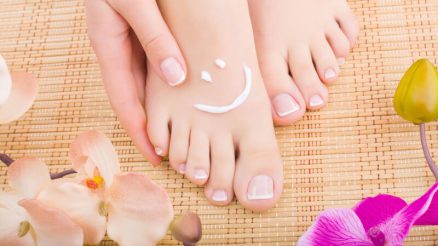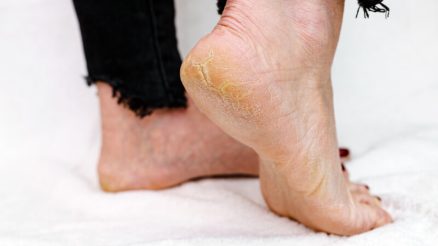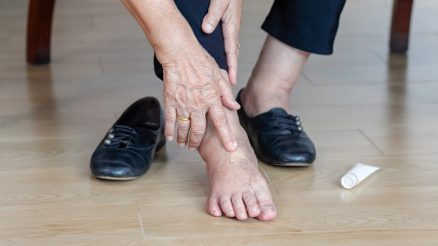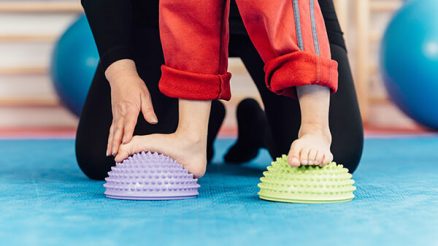Ingrown toenails can be a painful and frustrating condition. When the edge of your toenail grows into the surrounding skin, it can cause redness, swelling, pain, and even infection. Fortunately, there are several ways to prevent and treat ingrown toenails.
What is an Ingrown Toenail?
An ingrown toenail occurs when the corner or side of a toenail grows into the soft flesh of the toe. This often happens with the big toe, but other toes can also be affected.
Causes of Ingrown Toenails
- Improper nail trimming: Cutting toenails too short or rounding the edges can cause them to grow into the skin.
- Poorly fitting shoes: Tight or narrow shoes can put pressure on your toes, forcing the nail to grow abnormally.
- Nail injury: Stubbing your toe or other trauma can damage the nail bed, leading to an ingrown toenail.
- Nail shape: Some people have naturally curved or thick toenails that are more prone to ingrowing.
- Fungal infections: These can cause the nails to thicken or become deformed.
- Genetics: A predisposition to ingrown toenails can be inherited.
Symptoms of Ingrown Toenails
- Pain and tenderness along the side of the toenail
- Redness and swelling around the nail
- Warmth in the affected area
- Pus or drainage (if infected)
Prevention Tips
- Trim toenails properly: Cut your toenails straight across and avoid rounding the edges. Leave them long enough so that the corners are visible.
- Why this helps: Trimming toenails straight across helps the nail grow outward instead of into the skin. Rounding the edges can encourage the nail to curve and penetrate the surrounding tissue. Leaving the nails slightly longer ensures that the skin at the sides of the toe is not able to fold over the nail.
- Wear properly fitting shoes: Choose shoes with enough room in the toe box to allow your toes to move freely.
- Why this helps: Shoes that are too tight or narrow can compress the toes, increasing pressure on the nail folds. This pressure can force the nail to grow into the skin. Wide toe box shoes allow the toes to spread out and reduce the risk of ingrown toenails.
- Practice good foot hygiene: Keep your feet clean and dry to prevent fungal infections.
- Why this helps: Fungal infections can cause the nails to become thick, brittle, or deformed, which can increase the likelihood of ingrown toenails. Regular washing and thorough drying of the feet, especially between the toes, can help prevent these infections.
- Avoid injuring your toes: Be cautious to protect your feet from trauma.
- Why this helps: Stubbing your toe, dropping heavy objects on your feet, or engaging in activities that put repetitive pressure on your toes (like kicking a soccer ball) can damage the nail bed. This damage can disrupt nail growth and increase the risk of ingrown toenails. Wearing protective footwear during high-risk activities can help prevent these injuries.
Treatment Options
The treatment for an ingrown toenail depends on the severity of the condition.
Home Remedies
In many cases, you can treat an ingrown toenail at home with the following methods:
- Soaking: Soaking your foot in warm water, especially with Epsom salt, can provide significant relief. The warm water helps to soften the skin around the nail, reducing swelling and easing pain. Epsom salt has anti-inflammatory properties that can further help with the swelling and discomfort. It’s generally recommended to do this several times a day, for about 10-20 minutes each time, until the condition improves.
- Lifting the nail: This involves carefully lifting the edge of the ingrown nail to encourage it to grow outward, away from the skin. Use a clean, thin, and preferably blunt object to do this, such as dental floss or a small, rounded nail lifter. After lifting the nail, place a small piece of cotton or gauze underneath to keep it elevated and prevent it from digging back into the skin. It is crucial to change this cotton or gauze daily to maintain hygiene and prevent infection.
- Topical antibiotics: Applying an over-the-counter antibiotic ointment can help prevent a secondary bacterial infection. These ointments typically contain ingredients like neomycin, polymyxin B, or bacitracin. Before applying, ensure the area is clean and dry. Follow the instructions on the ointment for frequency and duration of application.
- Pain relief: Over-the-counter pain relievers can be very effective in managing the pain associated with an ingrown toenail. Ibuprofen is a nonsteroidal anti-inflammatory drug (NSAID) that not only relieves pain but also reduces inflammation. Acetaminophen primarily relieves pain but has little effect on inflammation. Always follow the recommended dosage on the medication packaging, and consult a healthcare professional if the pain is severe or persistent.
Medical Treatment
If home remedies don’t work or if the ingrown toenail is severely inflamed or infected, seek medical attention. A healthcare professional may recommend the following treatments:
- Partial nail removal: The doctor numbs your toe and removes the portion of the nail that is growing into the skin.
- Nail and root removal: If ingrown toenails are a recurring problem, the doctor may remove the entire nail and destroy the nail root to prevent regrowth.
- Antibiotics: If the toe is infected, your doctor may prescribe oral antibiotics.
Complications of Untreated Ingrown Toenails
If left untreated, an ingrown toenail can lead to:
- Infection of the toe and surrounding skin
- Bone infection
- Foot ulcers (especially in people with diabetes)
- Increased pain and difficulty walking
When to See a Doctor
- If you have signs of infection (redness, swelling, pus, or increasing pain)
- If home remedies haven’t improved your condition after a few days
- If you have diabetes or poor circulation, as you are at higher risk of complications
By taking preventive measures and seeking appropriate treatment, you can effectively manage ingrown toenails and keep your feet healthy and pain-free.








